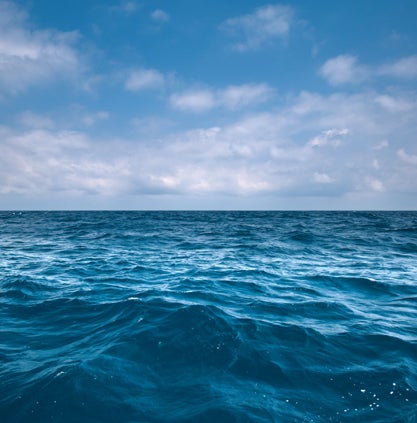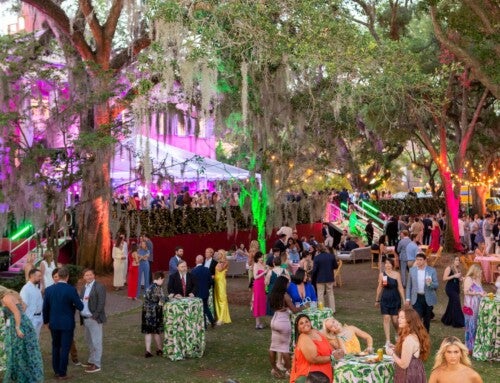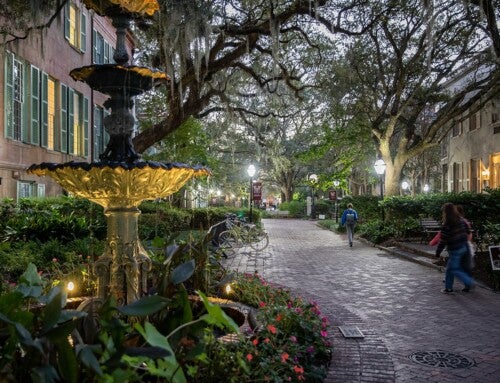 The College of Charleston is unlike any other place. There’s just something different about it. The College defies easy description. It’s old, yet new. Traditional and unconventional. Small in feel, big in opportunity. The College of Charleston seems to wear a thousand faces, all of them true. And that’s part of its charm, its distinction. The College is many things to many different people.
The College of Charleston is unlike any other place. There’s just something different about it. The College defies easy description. It’s old, yet new. Traditional and unconventional. Small in feel, big in opportunity. The College of Charleston seems to wear a thousand faces, all of them true. And that’s part of its charm, its distinction. The College is many things to many different people.
That’s how it’s been for more than two centuries. The College is an evolving, changing institution. And that’s a good thing. When you’re teaching the liberal arts and sciences, you’re teaching change, adaptability and, ultimately, transformation.
That’s what the College of Charleston’s new $125 million comprehensive fundraising campaign is all about: transforming the campus experience for today’s and tomorrow’s students.
This is where the College’s history is an important touchstone. What was once an institution of higher learning intended for the Charleston elite back in the late 1700s has expanded over time to include a much larger, much more diverse population.
As you’ll see in these pages, as if you’re walking through the halls of a gallery, each era in the College’s life has been vastly different than the one preceding it – the university building on its strengths and becoming something new, whether through the make-up of students, the actual footprint of campus or the size of enrollment. It’s as if the institution’s very DNA of transformation is imprinted in the herringbone pattern on its brick walkways – thousands of greater-than signs pointing forward.
And what is the way forward? At the College, we know what was once provincial is now global. Already the world is looking at the city of Charleston as a premier destination. Business is fast catching on as well, with new high-tech start-ups and well-established industries finding a home in the Lowcountry. A big part of Charleston’s metamorphosis into a world-class city is the College. And this comprehensive campaign will ensure that the College will be a world-class university.
You might argue that the College is already there. Many would agree that the College is an elite institution. We don’t have to look very far to see how our faculty are experts in their fields and our alumni are leaders in a vast array of professions. Their successes are apt testimony to the power of a College of Charleston education.
But as an institution, we can do more. And that is what this comprehensive campaign will do – allow the College of Charleston to do more. Through this campaign, we’ll strengthen scholarships so that the best and brightest don’t have to make the difficult decision between their hearts and their pocketbooks. We’ll boost faculty investment so that the amazing professors that have inspired countless students will be succeeded by a new generation of passionate teacher-scholars. We’ll bolster resources
dedicated to our facilities and classrooms so that our students and faculty are working together in environments that amplify the learning process.
Yes, the College of Charleston is world class in so many different ways. And through this comprehensive campaign, the College, like it has done so many times before, will continue to make great strides so that its possibilities are infinite and its impact and reach, boundless.
 It began as a dream among learned men of Charleston, an idea for an exceptional institution of higher learning in one of America’s most promising new cities. These men yearned for enlightenment, and were ashamed to have to send their children away for their education. As prominent rice planter and politician Henry Laurens said in 1771, the lack of a local college is “a great reproach upon our public character.”
It began as a dream among learned men of Charleston, an idea for an exceptional institution of higher learning in one of America’s most promising new cities. These men yearned for enlightenment, and were ashamed to have to send their children away for their education. As prominent rice planter and politician Henry Laurens said in 1771, the lack of a local college is “a great reproach upon our public character.”
A year earlier, S.C. Lieutenant Governor William Bull proposed a bill establishing a college in South Carolina, but its passage was derailed. Nonetheless, the spirit of this law lived on. Land was set aside in Charleston, money was raised and support for a college refused to die, even as the American colonies began their fight for independence in 1776.
In 1785, after war’s end, South Carolina’s leaders granted a charter (as seen here). The College had been born.
 It was January 12, 1828, and a crowd of students, professors, politicians, clergymen, doctors and more marched from City Hall toward the College’s campus. On George Street, a prayer was said and a hymn sung. Then, a cornerstone was laid, with Masons consecrating the new foundation by pouring corn, wine and oil upon the stone.
It was January 12, 1828, and a crowd of students, professors, politicians, clergymen, doctors and more marched from City Hall toward the College’s campus. On George Street, a prayer was said and a hymn sung. Then, a cornerstone was laid, with Masons consecrating the new foundation by pouring corn, wine and oil upon the stone.
A year later, the vision of Philadelphia architect William Strickland was realized (his rendering seen here), and the College had a new home. No longer would students be taught in a “mass of ruinous, ill looking, and inconvenient buildings,” as President Jasper Adams had characterized the young College’s previous infrastructure.
More than 175 years later, this magnificent building, known now as Randolph Hall and bearing several additions, remains standing, a testament to the College’s enduring grace.
 War was near. Professors left campus for military drills, and the senior class asked to be granted their degrees early, so they, too, could prepare for battle.
War was near. Professors left campus for military drills, and the senior class asked to be granted their degrees early, so they, too, could prepare for battle.
In April 1861, Confederate forces shelled Ft. Sumter. More men joined the fight, and the College’s enrollment dwindled to just seven students. In December 1864, two days before Union troops took Savannah, the College suspended classes. Two months later, Charleston was evacuated. The American Civil War was nearly over.
A year later, the College reopened, though its finances, like the city of Charleston seen here, were in shambles. Fortunately, men like planter Ephraim Baynard came to the College’s rescue. With his gift, the College reduced tuition and encouraged its professors to lecture to the public. Soon enough, enrollment was back to pre-war levels, and the College marched on.
 Most of the students in the 19th century may have been local boys, but – armed with a CofC degree – they didn’t stay that way for long. Many left the Holy City to make names for themselves in their respective fields, pursuing careers in politics or medicine as well as the clergy, education and business.
Most of the students in the 19th century may have been local boys, but – armed with a CofC degree – they didn’t stay that way for long. Many left the Holy City to make names for themselves in their respective fields, pursuing careers in politics or medicine as well as the clergy, education and business.
Perhaps the most famous alumnus of the time was John C. Frémont ’36 (top left), an explorer known as the Great Pathfinder, who in 1856 became the first Republican presidential candidate. Seen here clockwise, other significant alumni include William Trescott ’41, a diplomatist and assistant secretary of state (1860); poet Paul Hayne ’50, considered the “laureate of the South”; and world-renowned Classical scholar Basil Gildersleeve, who attended the College at age 13.
Thanks in part to the success of its alumni, by the end of the 19th century, the College had established itself as a respected institution of the liberal arts. Its standards were high, its spirit, stronger. The College was here to stay.
 Conflict begets change. And the Great War in Europe certainly changed the College’s stance on coeducation. Even in the middle of the First World War, President Harrison Randolph had considered the idea of coeducation “unwise.” But, desperate times call for desperate measures, and, by 1918, with many college-aged men leaving for England and France, President Randolph recognized the benefit of admitting women into the College.
Conflict begets change. And the Great War in Europe certainly changed the College’s stance on coeducation. Even in the middle of the First World War, President Harrison Randolph had considered the idea of coeducation “unwise.” But, desperate times call for desperate measures, and, by 1918, with many college-aged men leaving for England and France, President Randolph recognized the benefit of admitting women into the College.
“A world of new conditions surrounds us and is to be met and reckoned with. Women on all sides are called upon for work of a sort that had not been open to them before and face everywhere a future full of uncertainty,” he said. “I have become convinced that the only practicable solution of the problem is to extend to women … all the advantages which the College of Charleston offers.”
And, with that, the College opened its doors to women – changing their lives, and life on campus, forever.
 It always comes down to vision – and that’s exactly what Ted Stern had when he was appointed the College’s 16th president. Between 1968 and 1978, President Stern (seen here at the dedication of the new tennis courts) took the small, private school with 482 students, 27 faculty members, 11 degree fields and three intercollegiate sports and grew the student body to 5,193, the faculty to 181, the degree programs to 21 and the intercollegiate sports teams to 10.
It always comes down to vision – and that’s exactly what Ted Stern had when he was appointed the College’s 16th president. Between 1968 and 1978, President Stern (seen here at the dedication of the new tennis courts) took the small, private school with 482 students, 27 faculty members, 11 degree fields and three intercollegiate sports and grew the student body to 5,193, the faculty to 181, the degree programs to 21 and the intercollegiate sports teams to 10.
During Stern’s tenure, the College joined the state system, established a graduate school, began admitting African American students and increased the institution’s budget by $12.5 million. Under his direction, the College laid down the iconic herringbone-patterned brick walkways across campus, purchased 120 buildings, and built nine new buildings. In what would prove to be the institution’s biggest growth spurt to date, the College was coming into its own.
 Winning has a way of reshaping everything. Especially when you claim your first national championship. Suddenly, people everywhere take notice. That’s what happened in 1983, when the Cougars, led by Coach John Kresse, won the NAIA Tournament in Kansas City behind the heroics of Stephen Yetman ’83, Greg Mack ’88 and John Brett ’83. Their unlikely victory over West Virginia Wesleyan (the team’s fifth win in five nights) laid the groundwork for the College’s eventual rise to Division I athletics.
Winning has a way of reshaping everything. Especially when you claim your first national championship. Suddenly, people everywhere take notice. That’s what happened in 1983, when the Cougars, led by Coach John Kresse, won the NAIA Tournament in Kansas City behind the heroics of Stephen Yetman ’83, Greg Mack ’88 and John Brett ’83. Their unlikely victory over West Virginia Wesleyan (the team’s fifth win in five nights) laid the groundwork for the College’s eventual rise to Division I athletics.
The James Naismith Trophy adjusted expectations. Maybe not overnight, but things would certainly never be the same. The College now had a taste for the national spotlight, and momentum was building. This team would prove to be no anomaly, but, rather, the vanguard of wave after wave of top scholar-athletes – in every sport – hungry for greater competition and recognition.
 By the 1990s and 2000s, what was perhaps one of the greatest hidden gems in the South was finally discovered by the rest of the country. Simply put, people flocked to the College, coming from all over the United States and beyond. Enrollment swelled to 10,000 undergraduate and 1,200 graduate students – a far cry from the 500 student population of the late sixties. To accommodate the growing demand, the campus expanded and transformed not only to hold the larger numbers,
By the 1990s and 2000s, what was perhaps one of the greatest hidden gems in the South was finally discovered by the rest of the country. Simply put, people flocked to the College, coming from all over the United States and beyond. Enrollment swelled to 10,000 undergraduate and 1,200 graduate students – a far cry from the 500 student population of the late sixties. To accommodate the growing demand, the campus expanded and transformed not only to hold the larger numbers,
but to give students facilities equal to the quality of instruction they were getting in the classrooms.
The College also became a popular backdrop – for movies (The Patriot, Cold Mountain and Dear John), TV shows (The View, Crossfire and Army Wives), presidential candidates on the stump (Barack Obama, John McCain, Mitt Romney and Ron Paul) and pseudo-politicians (Stephen Colbert, who launched his campaign for the presidency of South Carolina in the Cistern Yard).
 The future, what does it hold? With BOUNDLESS, the College of Charleston has a pretty clear picture: It’s a wide-open sea of opportunity (something like the artwork of John Duckworth ’99 seen here). For more than two centuries, we’ve navigated some pretty tough waters – storms, earthquakes, wars, financial downturns and, at times, our own stubbornness to change. But we always persevere. Because we believe, to our core, that a College of Charleston education is different. It’s the place, it’s the people – and together, they create a learning environment like no other in this world.
The future, what does it hold? With BOUNDLESS, the College of Charleston has a pretty clear picture: It’s a wide-open sea of opportunity (something like the artwork of John Duckworth ’99 seen here). For more than two centuries, we’ve navigated some pretty tough waters – storms, earthquakes, wars, financial downturns and, at times, our own stubbornness to change. But we always persevere. Because we believe, to our core, that a College of Charleston education is different. It’s the place, it’s the people – and together, they create a learning environment like no other in this world.
BOUNDLESS is more than a campaign about dollars. It’s really our moment to shape the next chapter in the College’s history and to ensure a stronger, more open university. Scholarships, endowed faculty positions and improved facilities will do that. But, most important, the engagement of the entire CofC family – working in unison toward this goal – will do just that. Yes, the College of Charleston is great, but through BOUNDLESS, even greater things are on the horizon.
For more information about the specific goals and priorities,
check out BOUNDLESS: A Campaign for the College of Charleston.




